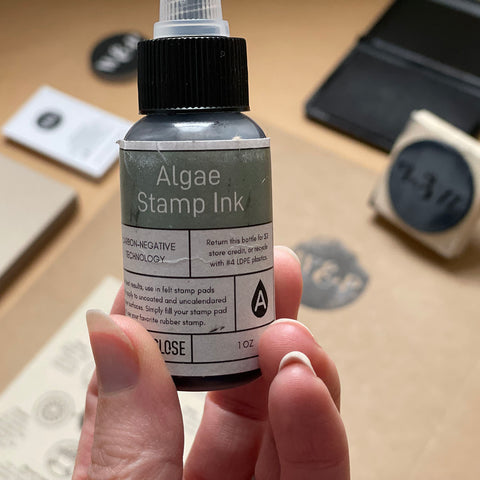Why Eco-Friendly Packaging Matters More Than You Think
The truth about packaging in business is that it's often overlooked. But as a small business owner, I've come to realize that it's a vital part of my brand. Here's why I spent two years researching eco-friendly packaging and why I pay more for it.

Firstly, presentation is key. I strongly believe that my customers deserve the best experience possible. As a print designer, I am particularly picky about the paper I use for packaging. It has to look and feel amazing! It’s just ingrained in me. Yes, that’s a paper joke.
The label should make you feel like you're holding a unicorn's mane or a cloud of cotton candy, except it's actually the softest, most luxurious yarn you've ever encountered. Don't worry, no unicorns or cotton candy were harmed in the making of this product. 😉
Secondly, sustainability is also a crucial factor to consider. It's important to me to be mindful of the environmental impact of the materials that I use. I make an effort to ensure that most of my packaging is eco-friendly in some way. Here are some examples of how I achieve this:
-
Yarn bands and other brand-related printed materials are made from uncoated paper with at least 30% recycled content. Additionally, it’s got excellent green certification due in part to being made with wind power.
-
Algae ink for logo and stamp: The truth is that there is no ink available today that is 100% free of non-renewable resources or chemicals. Algae Ink (available with a water-based and soy-based carrier) comes the closest. I print only with black, so I switched to Algae ink and avoided petroleum-based ink whenever possible.
- Packaged with Kraft flatback tape: Unlike water-activated tape, pressure-sensitive tape (PST) consists of film and a tacky substance that adheres to a given surface when light pressure is applied. Recommended for low-volume applications, PST is not recyclable, but it does not inhibit the substrate from being recycled.
-
99% plastic-free: My yarn is packaged with only paper materials, with the exception of a tiny 1.5” plastic sticker that holds the yarn bands together. I actually struggled with having this much plastic per skein of yarn, but the 1” circles weren't strong enough to do the job.
- Apparel Mailers: These mailers hold a lot and are 100% recycled content, plastic-free, and curbside recyclable. For larger orders, I use USPS priority mailboxes, which are cardboard, and I use my kraft flatback tape.

As a natural yard dyer, this aligns with my core beliefs!
These packaging decisions tend to be more expensive compared to the cheaper, petroleum-based alternatives that are available in bulk. However, I strongly believe that the benefits of these decisions far outweigh the costs. Not only are these decisions vital for the sustainability of my business, but they also contribute to the preservation of the environment. It’s my responsibility to make decisions that prioritize the long-term well-being of our planet, even if it means incurring higher costs in the short term.
I apply this same methodology when sourcing dye materials and wool.
Whenever I source material for my business, I ask myself: Is this going to improve my product, and what impact does it have on the environment?

Sure thing, Connie. I get it from Ecoenclose. In fact, that’s where I get a lot of my shipping and paper supplies. Here’s a link, https://www.ecoenclose.com/algae-stamp-ink/
I think they’re a fantastic company making some great products.
I love this!! May I ask where you get your algae ink? I’d love to look into it!